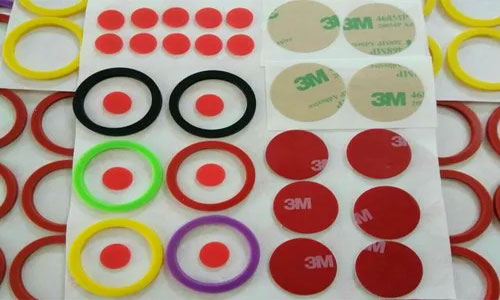
When it comes to optimizing die cutting parameters for different materials, there are a few factors to consider:
1. Material Type: Different materials have different properties and characteristics that can impact the die cutting process. For example, paper and cardstock may require less pressure and slower cutting speeds compared to thicker materials like foam or rubber. It's important to understand the specific requirements of each material you are working with.
2. Cutting Pressure: The cutting pressure refers to the amount of force applied by the die cutter to cut through the material. Too much pressure can cause the material to tear or become damaged, while too little pressure may result in incomplete or uneven cuts. It's important to find the right balance of pressure for each material. Start with a lower pressure setting and gradually increase it until optimal results are achieved.
3. Cutting Speed: The cutting speed refers to the rate at which the die cutter moves across the material. Again, different materials may require different cutting speeds. Some materials may benefit from slower speeds to ensure clean and precise cuts, while others may require faster speeds to prevent overheating or melting. Experimentation and testing on scrap materials are recommended to find the ideal cutting speed for each material.
4. Cutting Depth: The cutting depth determines how deep the die cutter penetrates into the material. This parameter is particularly important when working with materials that have different layers or thicknesses, such as laminated paper or fabric. Adjusting the cutting depth allows you to control the depth of the cut and avoid damaging underlying layers.
5. Blade Type: The type of blade used in the die cutter can also impact the cutting parameters. Different blade types are designed for specific materials and cutting purposes. For example, a sharp, fine-point blade may be suitable for cutting intricate designs on paper, while a thicker, serrated blade may be better for cutting through thick foam. Choose the appropriate blade for your material to achieve optimal cutting results.
Remember, each material may require some experimentation and testing to determine the best cutting parameters. Keep a record of the settings that work well for each material for future reference. Additionally, be sure to follow the manufacturer's guidelines and recommendations for your specific die cutting machine.
Here are the topics that we’ll cover in this complete guide Rotary Die Cutting in Industrial Applications Section 4: Best Practices and Techniques:
4.2 Die Selection Criteria for Efficient Cutting
4.3 Maintenance and Cleaning Guidelines for Die Cutters
4.4 Safety Guidelines for Operating Die Cutters
4.5 Trou Issues in Die Cutting
Contact: Pamela
Phone: +86 189 6365 3253
E-mail: info@industryprocess.com
Whatsapp:+86 189 6365 3253
Add: Yajing Industrial Park, No. 59 Shuangjing Street, Weiting Town, Suzhou Industrial Park
We chat
